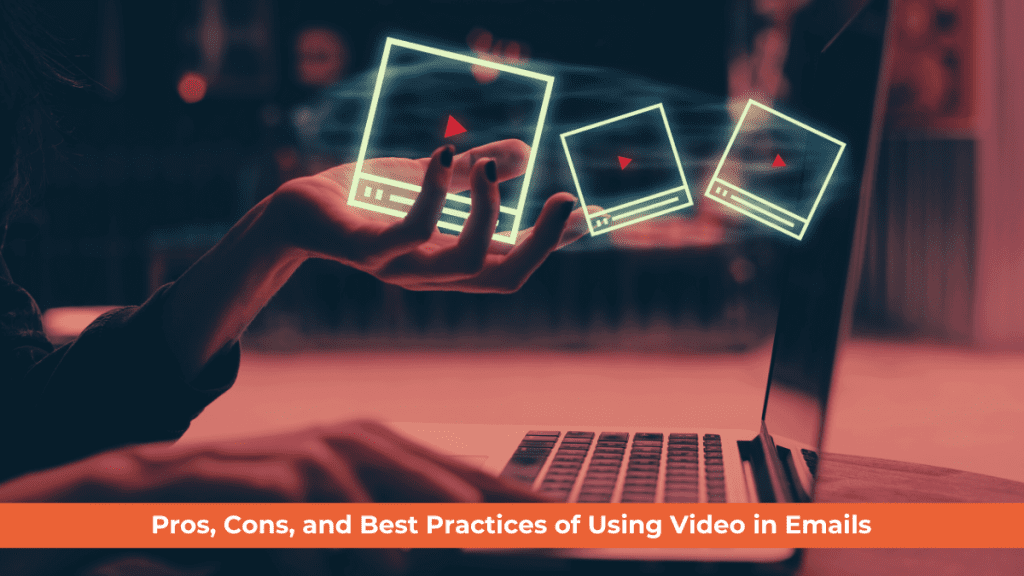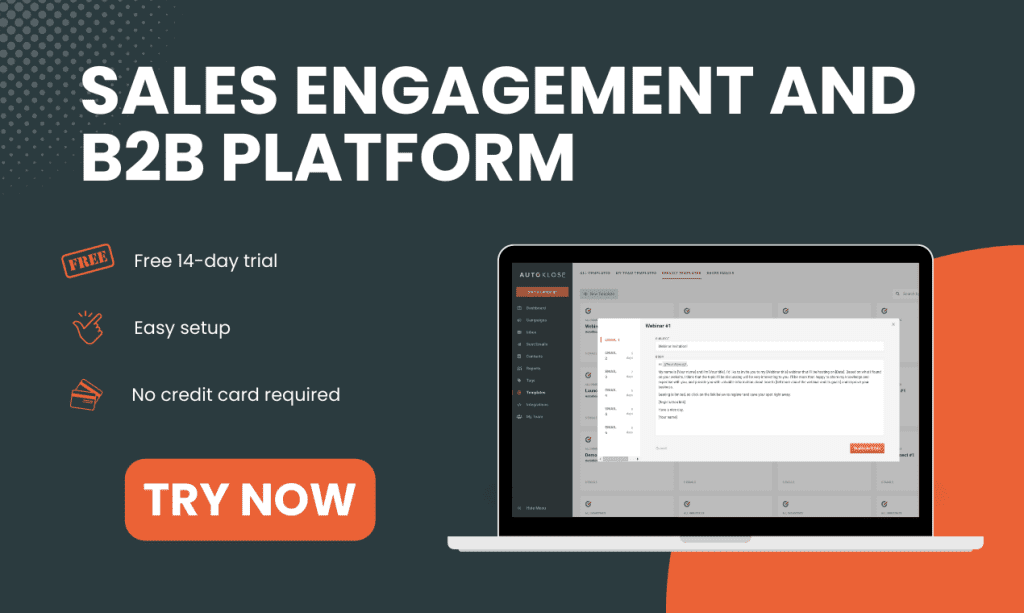
- Is video in email the sales tactic we’ve all been waiting for? Yes…and no. Like any medium for connecting with prospects, video has pros and cons, and you need to use it strategically.
- Video can help an audience connect better with the content and help you show an idea or product feature visually. But the flashy excitement of video wears off quickly, and deliverability can be a challenge.
- When using video in your sales emails, don’t jump on a trend because everyone else is doing it. Find a unique approach that you can personalize.
With two-thirds of people overwhelmed by their inboxes, it’s no wonder sales reps are looking for new ways to break through to prospects and achieve higher open rates, let alone replies.
Some reps look to video as a core part of their outreach strategy, yet plenty of others steer clear. Is it the silver bullet of the sales world or a tactic you should ignore?
On an episode of the 0 to 5 Million podcast, Ollie Whitfield and Shawn Finder dig into the topic, exploring the pros, cons, and best practices of using video in your sales emails. Read on to decide for yourself if and how getting on camera could fit into your next email outreach.
The pros of video that you should know
In our age of short attention spans, videos give your prospects the chance to actually see you in their inbox. Should you seize the opportunity? Here’s why video can be a win.
1. Audience connection
In Shawn’s book, a major pro of video is that it can help a recipient better connect with the content. “Personally, I’d rather watch a 30-second video than read a 30-second script, just to see [the content] instead of actually having to focus on the reading,” he explains.
Often-cited research has found that our brains process visuals up to 60,000 times faster than text. When choosing between sending a video and a wordy text-only email, video can be a clear victor in helping your audience understand your message quickly and connect to it.
Video may also be an asset to the shareability of your email, according to Shawn. “If you think about it, more people are actually willing to forward and share a video more than a text email — which then helps with your conversion rates, because now more people are seeing it,” he says.
2. Versatility
A text-only message is a lot of pressure for the sender. Unless you can capture someone’s attention immediately with some impressive word wizardry, standing out in a crowded inbox can be difficult.
A video, on the other hand, is much more versatile. Using video in emails offers you the chance to communicate in a unique way. You can use images to give the recipient a fuller picture of what you’re sharing with them or record a real-time walkthrough of your product, which you certainly couldn’t do with just text.
“I find it hard to visualize stuff,” Ollie says. “So I do need to see it.”
Where video misses the mark
Video isn’t a universally-adopted sales tactic. Why isn’t it widely considered the Holy Grail of email outreach? Ollie and Shawn point out a few of the cons that make video less than perfect.
1. Vanishing novelty
According to Ollie, the novelty of receiving a video in your inbox wears off quickly. Sure, the first-ever video you received might have piqued your interest. But the newness of video in emails only lasts so long.
“Once you’ve seen it a couple of times, you know what it is. And it’s the same as the email, except they’ve just taken more time and done something else as well,” Ollie explains.
Rather than simply relying on the potential novelty — and the mere presence of a video — to capture someone’s attention, it’s important to find actually interesting ways to use video. For best results with video, you need to actually add value as the sender. “That’s the part where a lot of reps don’t do that quite right,” says Ollie.
2. Deliverability
One of the major challenges of video is that content can quickly become too big to deliver. If you record a video that’s too long, you need to edit or downsize in order to send it, which quickly becomes time-consuming.
The key is to balance having your video be long enough to communicate your message but not so long that it’s undeliverable or flagged as spam. Ollie recommends aiming for a sweet spot of 60 to 90 seconds, but timing your video just right can be easier said than done.
On top of that, major email providers — like Yahoo, Gmail, and Outlook — don’t always support embedding video in emails. As a result, emails that include video might end up in someone’s marketing or promotions folder for less visibility. At larger companies with tougher security and more firewalls, a video email might not get delivered at all.
Beyond the technical aspects of delivery, Ollie points out there’s a human on the other end, with their own likes and dislikes. Even if your video makes it to someone’s inbox, that doesn’t guarantee they’ll watch it. He says that, unless the body of the email sufficiently compels him to watch the video, “I don’t bother because I know what it is.”
Once again, it’s critical to give the recipient an enticing reason to open the video as quickly as possible. Otherwise, your efforts will have been wasted.

Best practices to make the most of video in sales emails
Warts and all, using video in emails can be an effective tool in your belt, as long as you do so effectively. Here are two best practices that Ollie and Shawn have seen spark success.
1. Cover all your bases
Ollie points out that not everything is a numbers game — and that quality really matters when it comes to video. Knowing your audience is a critical part of using video well. If you’re selling to C-level executives, you should know that they almost certainly won’t open videos in their email if they don’t already know and respect you.
Rather than viewing video as an all-or-nothing tactic, Ollie recommends mixing it up. Try using video as the second email in a series of outreaches, for example, and A/B test how effective video is at certain points during a campaign.
“You’ve got to try and cover all bases because, otherwise, it’s just a wall of text emails in a row. That’s not ideal,” Ollie says. But if you rely too heavily on video emails, you won’t reach an audience who dislikes video either.
2. Don’t jump on the bandwagon
Shawn has noticed that many companies have hopped onto the trend of creating sales videos that feature the prospect’s name on a custom coffee mug, asking them to have a virtual coffee.
He’s not a fan. “I feel like too many people are doing that right now,” he says. “When it comes to video…come up with your own idea.”
While Ollie is slower to outright reject the coffee cup tactic (which seems to have strong clickthrough rates), his guidance is that your video strategy moving forward needs to focus on what’s unique to you.
Ollie cites the example of his friends at LeadIQ, many of whom were talented musicians, so they formed a mariachi band and recorded custom songs for each of their accounts. While this worked well for them, it likely wouldn’t work for someone else — especially if they don’t have that talent or interest. Simply buying a ukulele to record gimmicky songs via video won’t cut it.
Instead, research your prospects creatively. If you discover that someone likes tennis, show them your racket via video to connect in a personalized, 1:1 way. This will be much more effective than trying to jump on a bandwagon that just isn’t you.
“You’ve got to be unique and…come up with your own strategy,” says Shawn. When you approach video like this, you’ll get more plays and start better conversations along the way.

 The Autoklose
The Autoklose 


Leave a Reply
You must be logged in to post a comment.